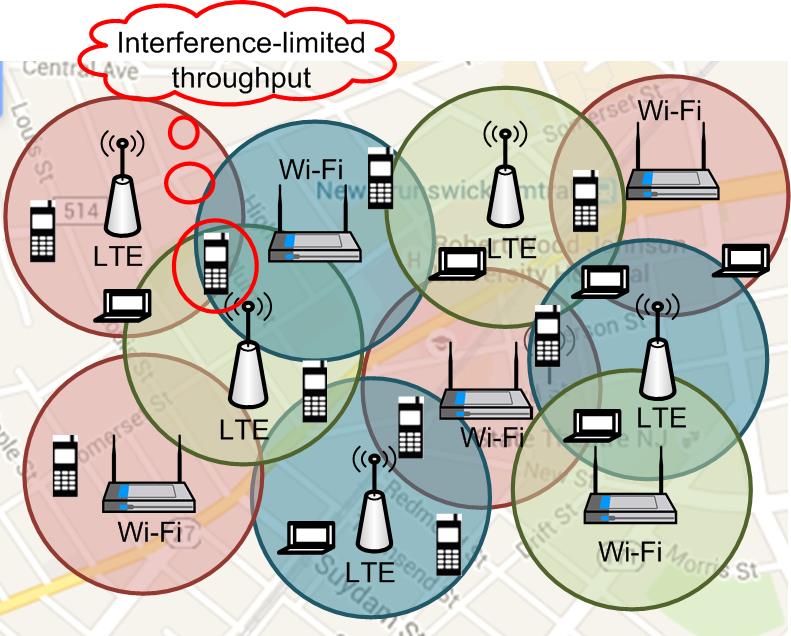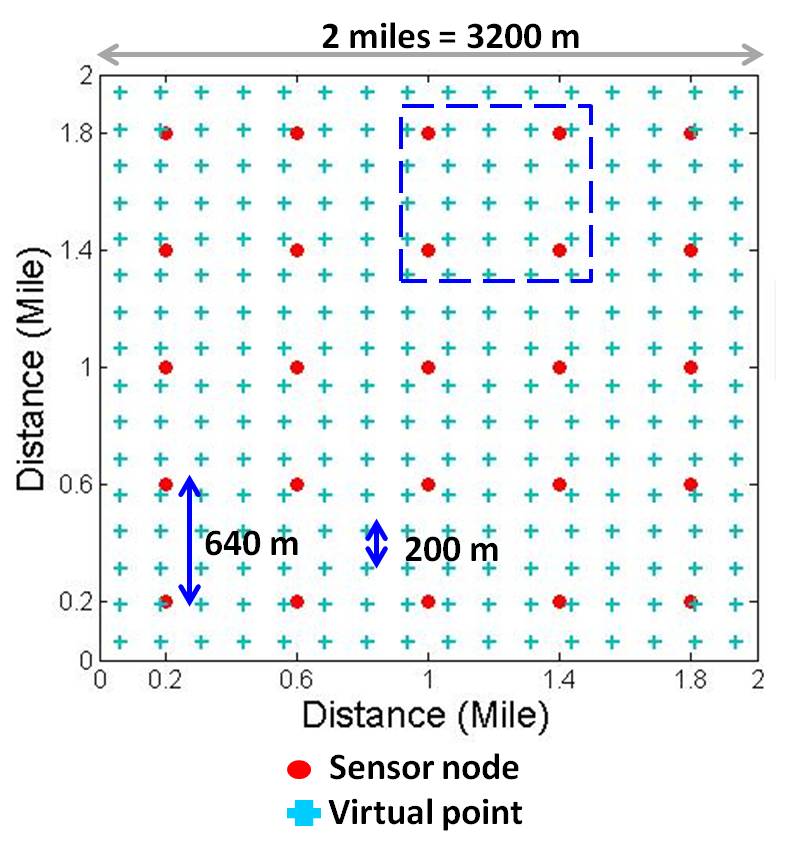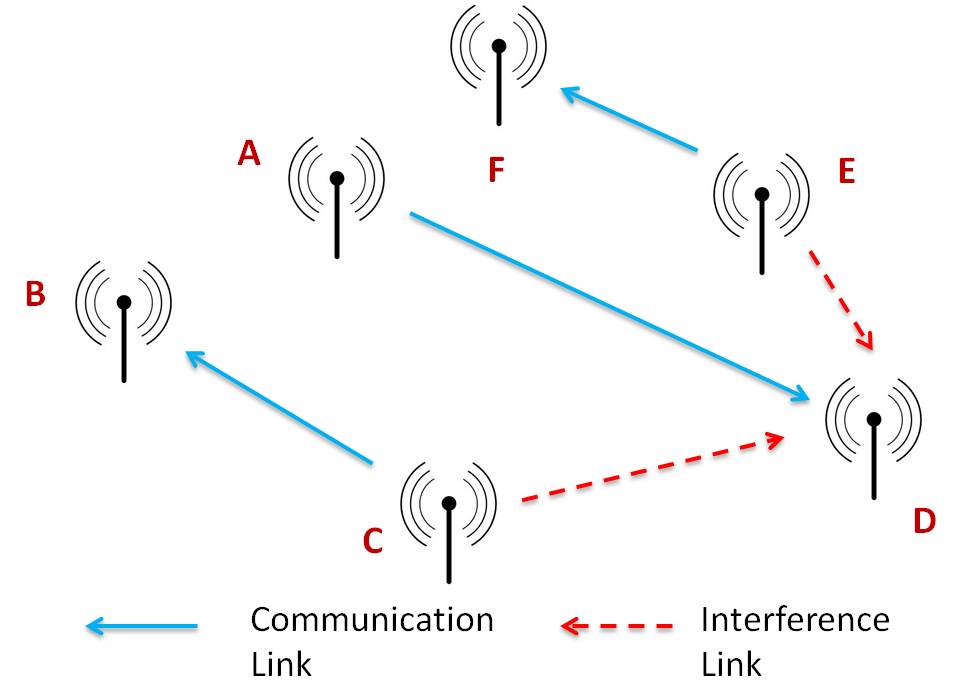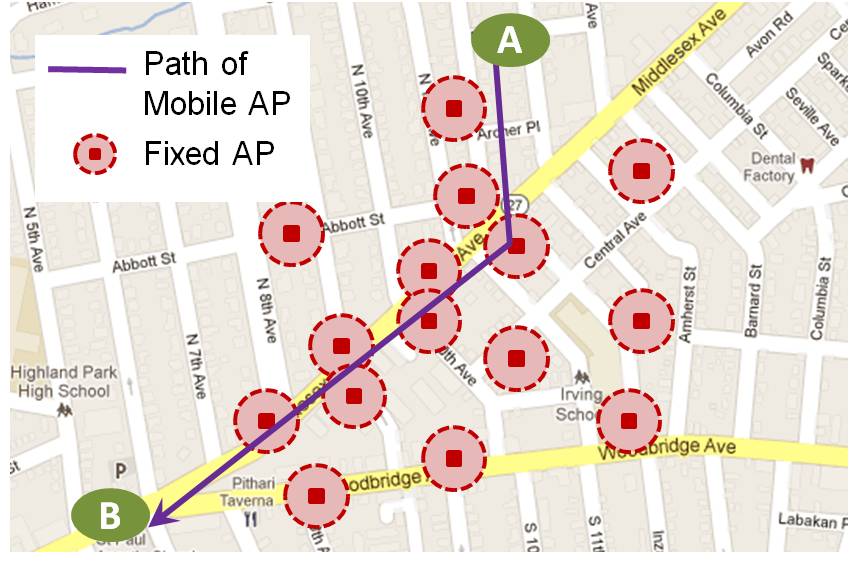Under construction... (always!)
Dynamic spectrum management of LTE-U and Wi-Fi Small Cell Networks

In this ongoing project, we propose an inter-network coordination framework to facilitate dynamic spectrum management and mitigate inter-network interference in network with multiple radio technologies or operators. This work is applicable to upcoming wireless systems where spectrum sharing between different technologies such as Wi-Fi and LTE is inevitable, most notably in 2.4/5 GHz ISM bands, TV white space, 3.5 GHz band, etc. We develop an analytical model to characterize LTE/Wi-Fi coexistence performance and partially validate it on the ORBIT testbed using 802.11a/g/n Wi-Fi and USRP-based software implemented LTE base station. We further investigated cooperative radio resource optimization for dense deployment which does not require to change existing LTE and Wi-Fi protocols.
Links: MobiSys/PhD Forum, ICC Workshop
Collaborators: Dola Saha (NEC Labs, USA), Samuel Baysting, Ivan Seskar, Wade Trappe, Dipankar Raychaudhuri (Rutgers University)
Constructing an interpolated RF map from spatial spectrum samples

This project aims towards the development of spectrum measurement infrastructure that can produce real-time geographic maps of spectrum usage. Such an infrastructure provides the basis for creating a spectrum database in support of dynamic spectrum access protocols, spectrum policing, network planning and deployment. We are developing algorithms that can aggregate, classify and geographically map collected RF power measurements so as to support the formation of the spectrum database. In our study, we study the path loss-based interpolation approach can accurately estimate the power levels at locations (virtual points) bounded by four spectrum sensor nodes deployed in a rectangular pattern. We implement the linear and stochastic regression techniques.
Visualization: Estimation of path loss at virtual points as a function of locations of a virtual point and an emitter.
Links: N2Women/SIGCOMM abstract
Collaborators: Larry Greenstein, Wade Trappe (Rutgers University)
Emulation of wideband wireless network with reduced complexity

In this work, we proposed a reduced taps approach to emulate multi-node wideband wireless network with multipath fading channel. The complexity of emulating such networks is directly related to the bandwidth of the underlying channels. This complexity can become prohibitive to implementation for network with bandwidths of several hundred MHz. The computational tasks needed to simulate a multi-node scenario consists of two components: (1) modeling the source-to-receiver channel, and (2) modeling the impact of pairwise interference between nodes. Thus, we proposed tap-reduction approaches for both the cases separately while maintaining important characteristics of the channel. We showed 50% of computational complexity reduction with significantly low loss in accuracy.
Links: VTC Fall'13,
CISS'14
Collaborators: Larry Greenstein, Wade Trappe (Rutgers University)
Mobile Hotspots in Densely Deployed WLAN Environments

This work presented a study of mobile wireless LAN (WLAN) hotspots which are used to provide cellular-WiFi tethering service to personal devices. In this study, potential performance problems due to interference are identified under a dense deployment of fixed and mobile WLANs. An analytical model for coexisting fixed and mobile WLAN hotspots with heterogeneous traffic is presented. We proposed an adaptive channel assignment (ACA) scheme for improving mobile AP performance. We also show that setting the scanning interval in ACA requires consideration of the speed at which the mobile WLAN is moving in order to compensate for the throughput losses during channel scanning.
Links: PIMRC'13
Collaborators: Akash Baid, Ivan Seskar, Dipankar Raychaudhuri (Rutgers University), Tutomu Murase (NEC, Japan), Masato Oguchi (Ochanomizu University)

